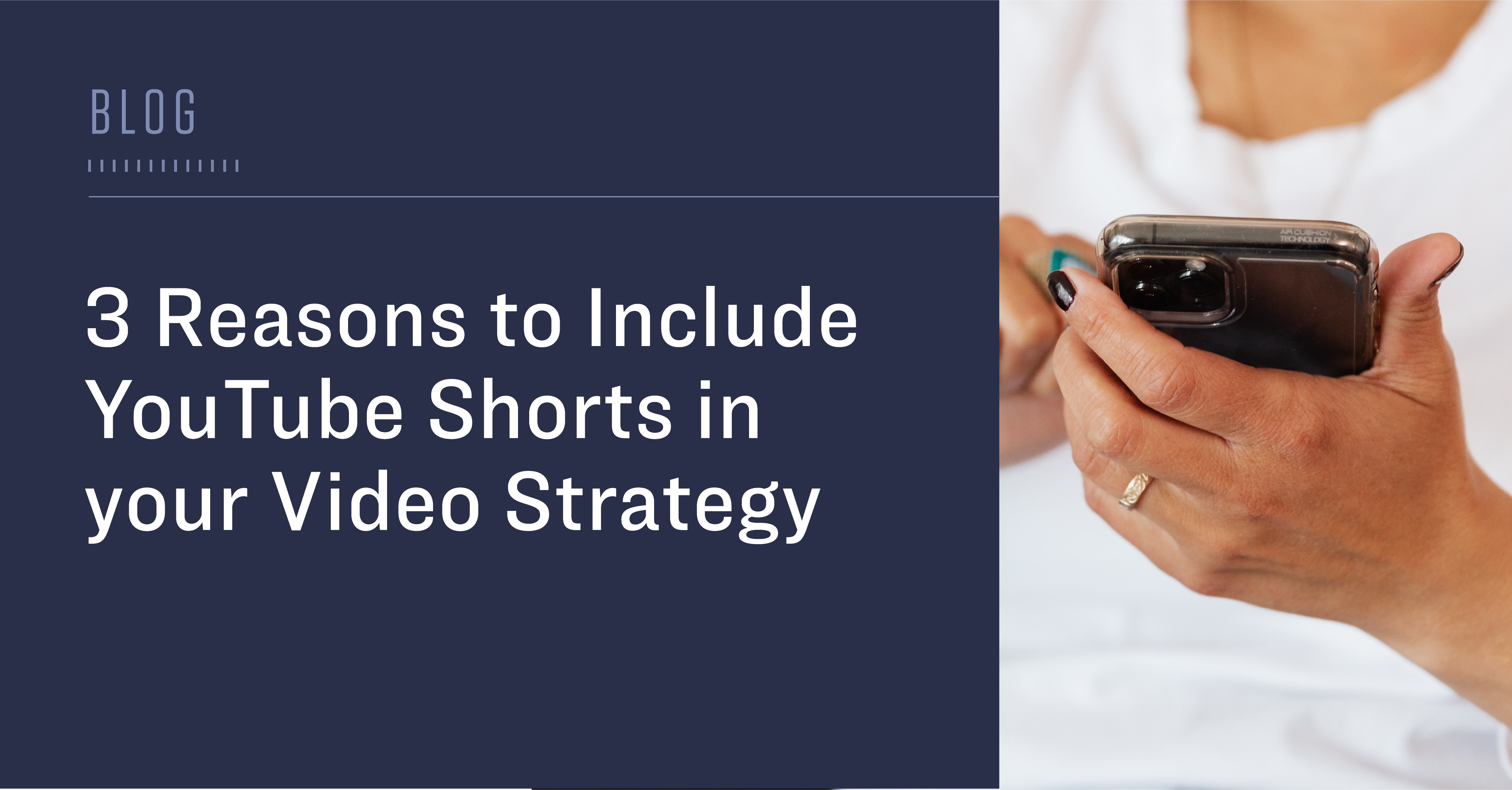
3 Reasons to Include YouTube Shorts in your Video and Marketing Strategy
January 8, 2024From Shorts to Reels to TikTok – if one thing is clear, it’s that short-form video content designed for mobile has quickly become the content king. Now, there are more ways than ever for brands and businesses to create engaging, shareable content that connects with their audience.
75%, or 1.5B, of YouTube users now watch and engage with YouTube Shorts. And with recent announcements from Google, such as the deprecation of YouTube Stories, it’s clear Google is putting a heavier emphasis on YouTube Shorts for advertisers.
Advertisers have already found direct-response success with Shorts through Video Action Campaigns and app campaigns. In addition, at the recent IAB NewFronts, Google announced new ways to leverage YouTube Shorts to drive awareness. For example, advertisers can now test Shorts as part of Video reach campaigns to maximize efficient reach and access a YouTube Select Run of Shorts lineup to ensure ads appear alongside the most popular videos.
Shorts are an incredibly valuable tool for advertisers looking to build brand awareness, promote a new product or service, or connect with your audience on a deeper level. Read on for 3 reasons why you should include YouTube Shorts in your video and marketing strategy.
- Shorts are the new “show” trend
Not too long ago, for advertisers wanting to reach consumers alongside “premium” television content, that meant reaching them while sitting on the couch in front of a TV. However, consumer watching habits have significantly changed thanks to evolving technology and the pandemic.
The days of watching traditional TV have nearly ended for younger viewers, with 90% of 18- to 24-year-olds heading straight to their favorite streaming service. Traditional broadcast viewing time has fallen two-thirds over the last decade for this age group, now only accounting for 53 minutes. And in many cases, the television is only on for background noise, as many viewers have a mobile device in hand.
However, despite this shift, consumers spend more time watching content than ever. And that’s because the definition of “primetime” content is really up to the persona. For many, primetime now means streaming all types of content across various devices. This shift in consumer behavior forces advertisers to rethink what it means to reach consumers during their favorite “show.”
For example, the rise in popularity of short-form content shows that user-generated content from Creators is now considered a “show.” The Creator economy has grown nearly 120% in the last two years, which is great news for brands as this authentic content attracts views and engagement and drives sales. In addition, YouTube itself incentivizes Creators to publish monetizable content, making it more desirable to post Shorts.
Adding Shorts to your video and marketing strategy turns YouTube into a well-rounded platform for reaching consumers during any mood and any stage of the funnel. First, use Shorts to reach consumers with quick, concise messages that feel organic. Then follow up with longer messaging on YouTube CTV while viewers watch longer-form content such as sports videos or feature-length movies. - Consumers have a discovery mindset when using YouTube Shorts
YouTube is not just a platform for entertainment – it’s also a platform to discover new products, trends, and influencers. In fact, 75% of people say YouTube videos make them more aware of new brands or products.
When consumers are in the mood for product discovery specifically, they gravitate towards Shorts because they’re easily discoverable, snackable, and provide an immersive experience. As a result, brands must have a strong presence on Shorts if they want to bring in new customers and re-engage current customers. Tapping into this content means that you’ll reach consumers with your messaging while they’re watching the content and creators they love.
Brands have already seen upper funnel and brand awareness success with Shorts, as Shorts are likely to drive a higher completion rate than on other platforms, according to a study from Creatopy, where they ran identical ads on TikTok, Reels, Shorts, and Pinterest’s Idea Pins.
This high completion rate is likely due to consumers’ laid-back mindset when they come to YouTube, as they are used to watching long-form content. That mindset carries over as they move into the Shorts feed. In addition, thanks to Shorts looping until a viewer swipes or closes out of the Shorts viewing experience, the average percentage viewed metrics are typically higher than the average for a channel. Some even reach above 100% as viewers watch over and over again. - Gen Z isn’t only on TikTok and Instagram
It’s no surprise that younger audiences flock to TikTok, but according to research, YouTube is more popular among Gen Z compared to any other social media platform in the US.
-84% of Gen Z watch videos on YouTube
-YouTube is consumed by 18% more of Gen Z vs. Instagram
-YouTube is consumed by 21% more of Gen Z vs. TikTok
Gen Z uses YouTube for a wide variety of reasons from learning something new, relaxing, and revisiting positive memories. This means you can catch them when they’re actively searching for something or when they’re in a laid back state – making it a perfect full-funnel tool.
By utilizing Shorts, businesses can tap into the massive potential of the YouTube platform and connect with potential customers in a new and innovative way. If you want to learn about how Pixability can help take your YouTube strategy to the next level, reach out today!